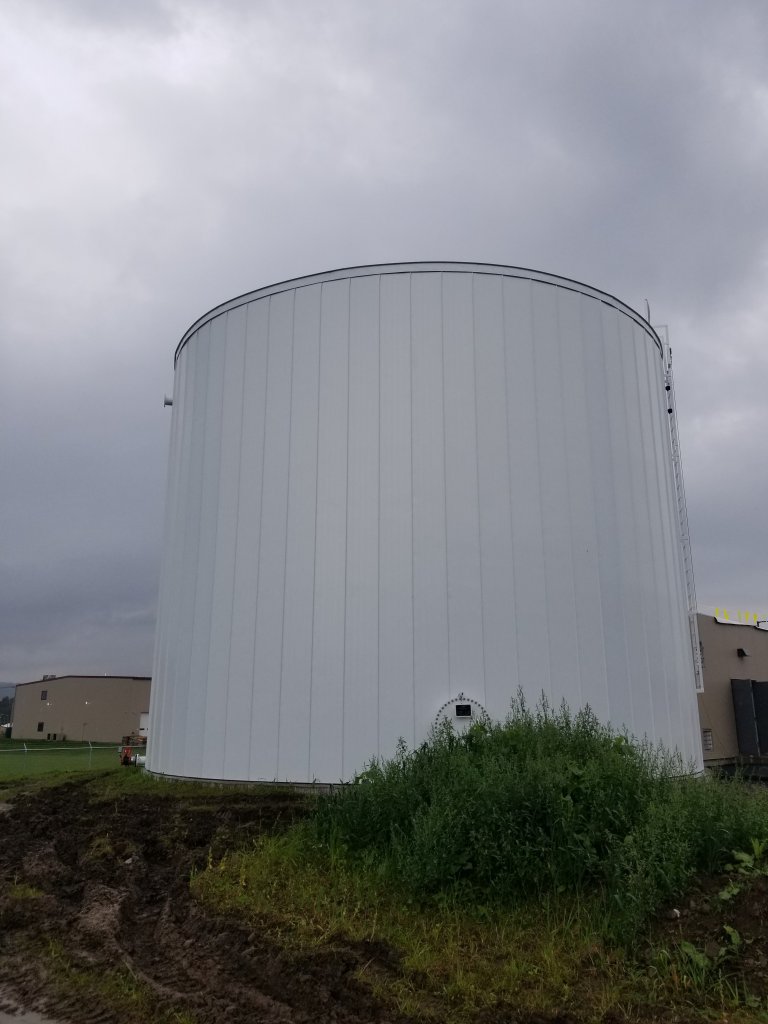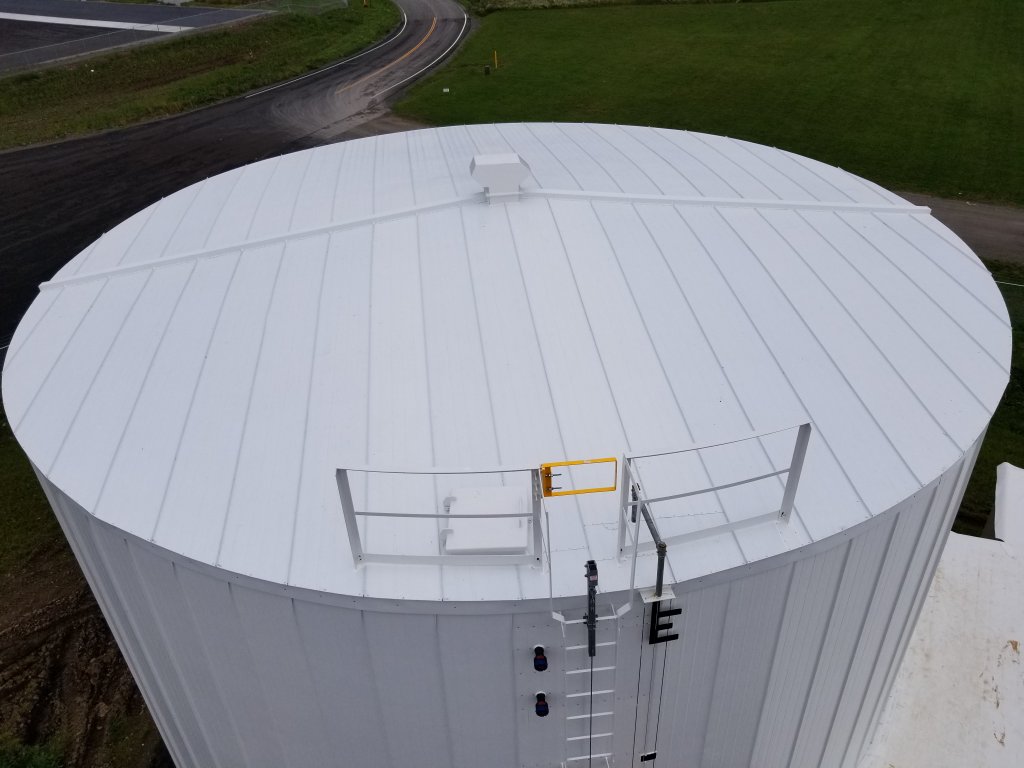The Problem:
The water storage tank holding fire protection water did not meet NFPA 22 codes section 16.4. This code states 16.4.1 – Where permitted by the authority having jurisdiction, tanks shall be permitted to be insulated to conserve energy.

The Solution:
RIDGLOK® Vertical Standing Seam Panel Insulation System is an ideal solution for storage tanks holding water for fire protection. The durable insulation maintains the temperature of the tank to prevent water from freezing in cold regions. RIDGLOK® tank insulation helps conserve energy to lower costs for the client. Click here to learn more about how RIDGLOK® can help your tank meet NFPA 22 codes.
As with all project materials and equipment, the tank manufacturer seeks products that economically meet all their customers’ needs. In this case, the tank manufacturer was concerned with:
- Speed of installation (man-lift vs. scaffolding)
- Safety of installation (man-lift vs. scaffolding)
- Low maintenance of the insulation system
- Long life of the insulation system
- High wind resistance
- All structural connections sealed away from the weather.
- High level of corrosion protection against CUI (corrosion under insulation)
- Color matching with the facility color scheme
- Easy, fast repairs
- Expansion/contraction built naturally into the system (no bands to be periodically checked and tightened)
- Quality from having panels pre-manufactured to specification
- And the cost-benefit ratio
To ensure the best system for their client, the tank manufacturer specified using RIDGLOK® tank insulation in the project design documents.

The Experience:
This RIDGLOK® Vertical Standing Seam Panel Insulation System was manufactured at our facility in Reed, KY. For the installation on a 41.6’ diameter x 32’ in height, fire water storage tank with a cone roof, used for fire protection at a warehouse. The RIDGLOK® straight roof design minimizes potential corrosion points contributing to the overall performance of the system.
The project was completed within the expected timeframe, despite very wet and muddy conditions and now meets NFPA 22 codes.


